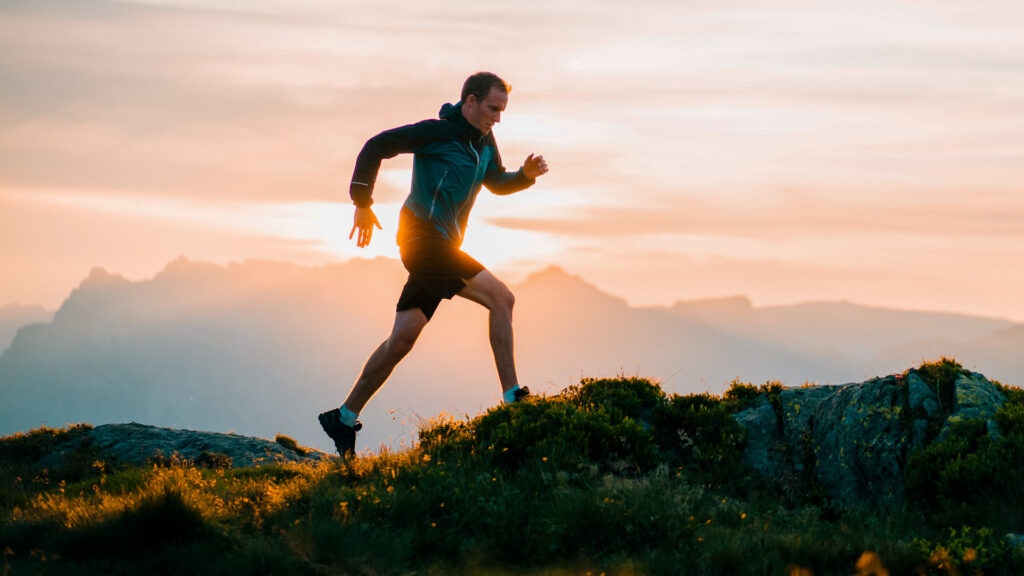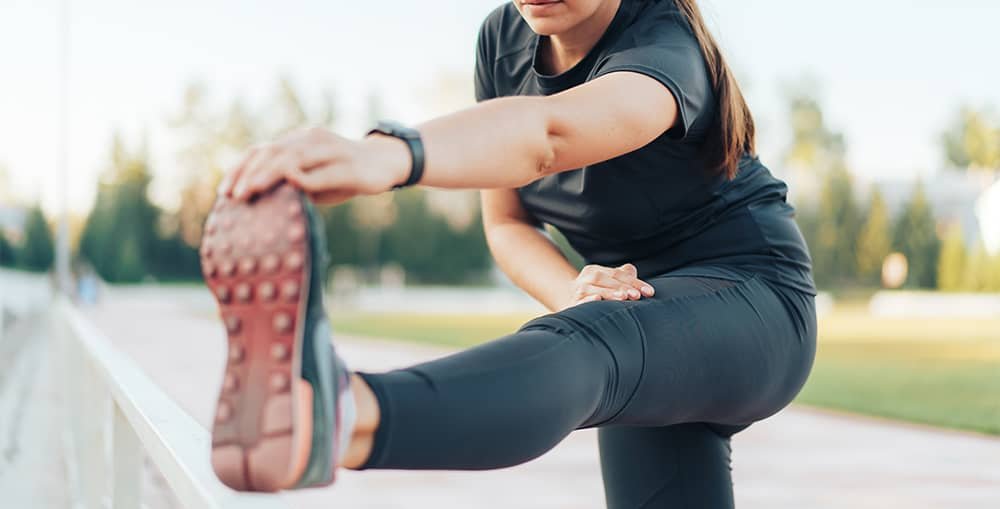Pre-climb training
Pre-climb training
How do you train to climb mount Kilimanjaro?

What does it mean to train your way to reach an improved level of fitness? Essentially you need to push yourself, gradually getting your body to do a bit more than it is used to; to get stronger, to improve your endurance and to shorten the body’s recovery time afterwards. It sounds easy, but it’s hard work.
If you are not accustomed to training, it’s important not to try too much, too soon. Establish a routine, devise a program and take things gradually. Start early, as soon as you have decided to take on Kilimanjaro, and then stick to your program. Even better, take some advice from a fitness instructor. Let them know that you are aiming towards a Kilimanjaro climb, so they can structure a program specifically for your needs.
And remember that away from the gym, or any type of formal exercise, there is plenty you can do on your own. Walking costs nothing and can be done anywhere, so build walking into your daily routine. Build up the distance each time you walk and if you are lucky enough to live near some hills – of any height – use them to get used to climbing and descending. Walking as part of your training is also a great opportunity to check that your boots fit and that they are in good condition. If you can find time, walk good distances on consecutive days, as that is what you will be doing on Kilimanjaro.
There are plenty of different ways of improving your strength and stamina and some climbers will already have a fitness routine. Below, we suggest a number of different types of exercise which can be combined to give you the fitness necessary for your Kilimanjaro climb. Even if you do already exercise regularly, we would ask that you read through these suggestions to ensure that you have a good balance between building strength, increasing your aerobic fitness and improving your stamina. Work hard on these and you’ll have every chance of standing on the Roof of Africa!
A structured, personalized approach to your training

You will probably know from other parts of your life whether you need help to get fit, or whether you have the discipline to devise a program and then follow it on your own. If you need help, there are a number of ways to get it.
The traditional route would be to find a personal trainer. These people often work either directly for or with gyms, so you could contact one through your local gym/fitness centre. Otherwise, a quick search on the internet will provide you with contact details. It is usually less expensive to get the services of a personal trainer who works at a gym, so if you are already a gym member, that is the place to start. And if you don’t want the expense of a personal trainer, many gyms run a variety of group classes, which are lower-cost or even free of charge or included in your gym membership. Classes can include things such as spin (cycling), core stability, yoga, Pilates and much more besides. Group classes mean that you are not training alone, so you have others to motivate you, as well as the expertise of the person running the class.
A more recently developed option is to get a ‘virtual’ personal trainer, and these have become particularly popular to allow people to comply with restrictions imposed during the global pandemic. There are also many types of ‘apps’ designed to help you get fit, meaning that you can exercise without leaving home.
For those who prefer to exercise without any of the above support, it is still a good idea to set yourself objectives and monitor your progress against them. A suitable goal might be to increase the distance each time, or to reduce the time taken to cover the same distance whether you are running, cycling or swimming.
Fitness and exercise: setting realistic goals

But whether you are joining a gym, employing a personal trainer, downloading an exercise ‘app’ or exercising on your own, make sure that any goals that you set are realistic. If you start your chosen program in good time, well before your Kilimanjaro climb, then there is no need to set goals and targets that are too challenging. Work gradually towards them: if you try to achieve too much, too soon, then you will simply become demotivated and set yourself up for failure. And remember, make your exercise program as varied as possible, as simply repeating the same routine will become boring and you are more likely to give up. Core strength, cardiovascular improvements, increasing stamina – make sure your program covers all of these.
Aerobic conditioning

Much or your physical preparation for Kilimanjaro will be concentrated on aerobic exercise. Remember that at its core, climbing Kili is a walk – though a very special and very tough one! That means that walking should form a big part of your training and if you can partially replicate the climb by walking up some local hills, then your preparation will be greatly improved. Good aerobic training means that your use of oxygen will be much improved, and you will feel more comfortable once you are up on the mountain.
Variety is important

We have already stressed the importance of variety. Repetition is inevitably at the heart of a lot of exercise, but ‘mixing it up’ is important to ensure that you cover all the essentials. And to ensure that you stay motivated. You may already be engaged in regular sport as part of your everyday life, whether it is contact sports (such as football or hockey), racket sports (such as tennis) or individual pursuits such as swimming, cycling or running. All of these are great exercise options, of course, but have a good look at what you already do, and then choose to do something different – as well as, not instead of, maintaining your normal, everyday chosen activity.
Building up your strength

Building up your strength does not mean that you have to become a musclebound, Olympic standard weightlifter. But it is important in two areas, namely to strengthen your leg muscles and to ensure that you have a strong core. As you will be walking for many hours each day on Kilimanjaro, the importance of having strong legs is obvious and needs no explanation. But climbing nearly 6000 metres will put added strain on your legs, and although your porters will be taking most of your luggage, you will still be carrying your own daypack (maximum 6kgs) and this extra weight also demands strong legs.
There are many tried-and-tested exercises which build leg-strength, and these can be done without the need for any equipment. You can find videos on the internet which will give you instruction on how to perform these. Consider the following exercises: squats, lunges, side lunges, toe-ups and leg extensions.
You are normally advised to do a ‘circuit’ of about 10 repetitions of each of these in succession, then take a rest, then do another circuit. You should do a minimum of three circuits at each session.
Jogging/running

For those with robust joints (especially knees), jogging or running is the best cardiovascular exercise you can get. There is no need to have any special equipment, apart from good-quality, supportive shoes, so it is low-cost and you can go straight from your front door! But the downside is that every time you put your foot down with all your bodyweight on it, you are putting a lot of strain on your ankles and knees. If you have any slight weakness in these vital joints, then jogging or running will find it out and therefore you should avoid this otherwise excellent activity.
If that, is you, then you should consider activities which are low or no-impact.
Cycling

Cycling is another cardiovascular alternative, very popular though it does have its disadvantages. First of all, you will need a reliable bike, which can be expensive, and secondly you will need somewhere pleasant to cycle. If you live in a city or other built-up area, sharing your route with motor vehicles can take the shine off what might otherwise be a pleasant cycle ride.
Mountain footwear

Good boots are essential, you cannot afford to make do with something substandard on a serious climb like Kilimanjaro. Specialist advice from an outdoor or mountain specialist is advisable. Check the fit carefully, walk up and down the shop as much as you can. Ensure that your boots give you adequate support, especially for your ankle. Make sure to ask if they are genuinely waterproof, not just water-resistant – there is an important difference. Gore-Tex is the leading waterproof, breathable footwear material.
Before you buy them, try your boots on at the end of the day, for strangely enough your feet are bigger than they are first thing in the morning. Wear the socks you intend to wear when you do your Kili trek: this will ensure you get the right fit. And remember that a medium-weight boot is best. Heavy boots will feel…well, heavy after a few hours of walking, and it’s these little things that make the difference.
Practise your hydration and your diet

It may seem strange to suggest practising your eating and drinking, but many people do not drink nearly enough in their everyday life. On Kilimanjaro, keeping hydrated will be super-important, so get into the habit now of drinking more every day. And try out some energy drinks and high-energy snacks, to see which ones are best for you.
